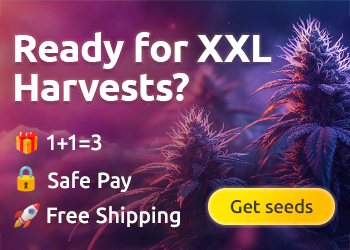Those who consume marijuana have “healthier inflammatory cytokine profile, better insulin sensitivity, and higher levels of physical activity than nonusers,” all of which can be linked lower diabetes, according to an ongoing clinical trial presented at the 2024 annual American Diabetes Association 84th Scientific Sessions.

In the findings from the ongoing SONIC trial, first reported by Medscape, Angela Bryan, PhD, professor and codirector of CUChange at the University of Colorado, and her colleagues hypothesized that “those inflammatory profiles would improve over the course of 4 weeks, particularly for those using a CBD as opposed to a THC product.”
The SONIC study involved regular cannabis users with an average age of 30 and a healthy body mass index (BMI). The study group was predominantly White (86%) and male (59%). These participants were matched with a similar group who had not used cannabis for at least a year. At baseline, the overall NSDR Healthy Eating Index score for participants was 51.24, indicating a “need for improvement/poor diet.”
“Folks were maybe not killing it in the dietary domain,” Bryan acknowledged. “However, they were absolutely killing it in the physical activity domain.”
Researchers performed oral glucose tolerance tests to calculate the Matsuda index of insulin sensitivity and measured inflammatory markers, including tumor necrosis factor alpha, interleukin 6 (IL6), IL1 beta, IL12, interferon gamma, IL4, and monocyte chemoattractant protein 1 (MCP-1). In a “randomized encouragement” design, users were assigned to purchase and use a flower product for 4 weeks, in any amount they desired. Participants completed daily assessments of their cannabis use, alcohol use, diet, and physical activity.
Eating patterns between groups were similar over the 4 weeks, with cannabis users reporting “marginally” more servings of salty snacks compared to nonusers. None of the daily associations were influenced by the specific cannabis product used.
After 4 weeks, tests showed no change in participants’ inflammatory markers. However, a significant finding was the “stark difference” between users and nonusers, with users exhibiting significantly lower levels of inflammatory biomarkers and circulating cytokines compared to nonusers.
An exception was MCP-1 levels, which increased over time in users but remained unchanged in nonusers. Bryan called this finding “perplexing” and sought audience input, noting that MCP-1 levels are positively associated with diabetes.
After controlling for BMI and inflammation, there were no effects of group or group by time interaction on the Matsuda index of insulin sensitivity. “Seemingly, there are no chronic effects of cannabis use on insulin sensitivity,” Bryan said.
Bryan acknowledged study limitations, including a very healthy sample of individuals who exercise frequently, which might influence results, especially regarding insulin sensitivity. The team could not use “gold standard” randomization due to the schedule-1 status of CannaVan cannabis, and the MCP-1 findings are challenging to interpret.
Additionally, Bryan noted, “Our day-to-day level data show only slight differences in behavior between those who use cannabis and those who don’t, and very slight differences between users’ behavior on days they use cannabis and days they don’t.”
“I think all of this put together shows us that the relationship between cannabis use and potential implications for diabetes is a lot more complicated than just couch to couchlock [very deep relaxation/sedation] or runner’s high,” she said.
The team’s next step, currently underway, is to assess the acute response to cannabis with an oral glucose tolerance test immediately after participants use a product. Since cannabis is a schedule-1 drug, it can’t be brought into the laboratory. Instead, researchers are using a CannaVan, a mobile lab. “We drive it to their homes, they come out, we draw blood, and we send them back into their homes to use as much of their product as they want,” Bryan explained. “They come back out to the van, do all the follow-up assessments, and we take blood again to verify their exposure. That’s how we collect those data.”






